How pro-Palestinian camp, and an extremist attack, roiled the protest at UCLA
The news this week has been dominated by the pro-Palestinian protests on college campuses nationwide. One large protest was dismantled this week at the University of California, Los Angeles.
Questions continue to swirl about whether extremist groups are involved in the protests, which first drew national attention at Columbia University in New York, and whether the protests themselves include hate speech. But the UCLA protest was one that was conclusively influenced by a clash with extremist forces this week.
The latest: Encampment raid at NYU, hunger strike at Princeton as campus battles rage
A day later, police wearing riot gear tore the camp down and arrested more than 200 people in the early hours of Thursday morning. USA TODAY reported from the scene. Here is what happened.
April 25-30: UCLA protest establishes itself
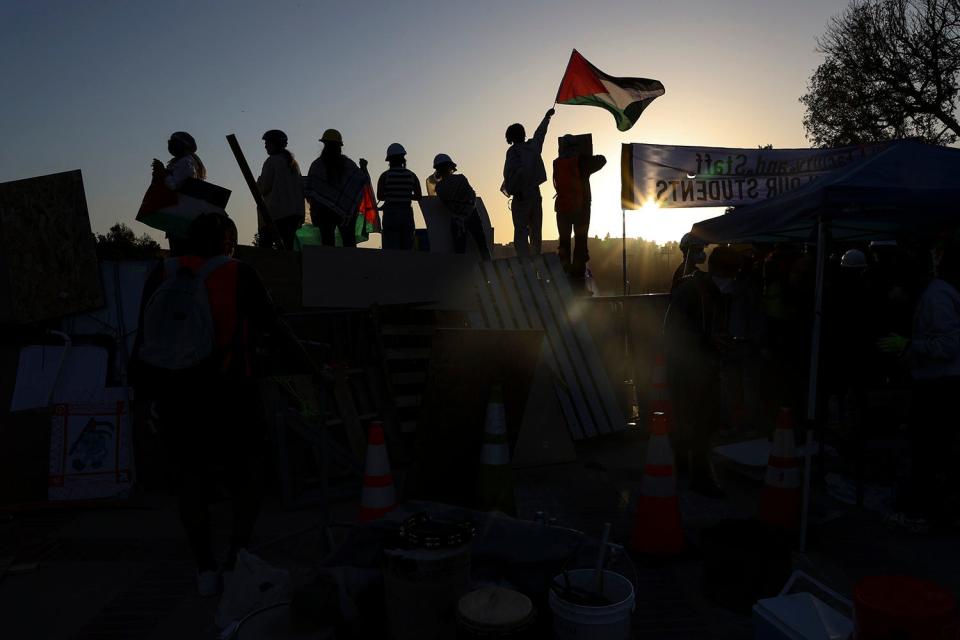
Students began gathering April 25 at Dickson Plaza, an outdoor quad sandwiched between a library and the university’s historic concert hall, Royce Hall. Protesters called for an end to the war in Gaza and for UCLA to be more transparent about its financial ties with arms manufacturers and with Israel.
They installed makeshift barricades of plywood and pallets to close up the protest area. Over the next few days, the protest grew to include a medic station and food area. Dozens of tents were also set up.
At the same time, people inside the camp said and livestream videos showed, pro-Israel protestors began to appear, usually late at night, to heckle the camp and bombard it with loud noises played over speakers. One student in the camp told USA TODAY this was like “psychological torture.”
April 30-May 1: The protest is attacked
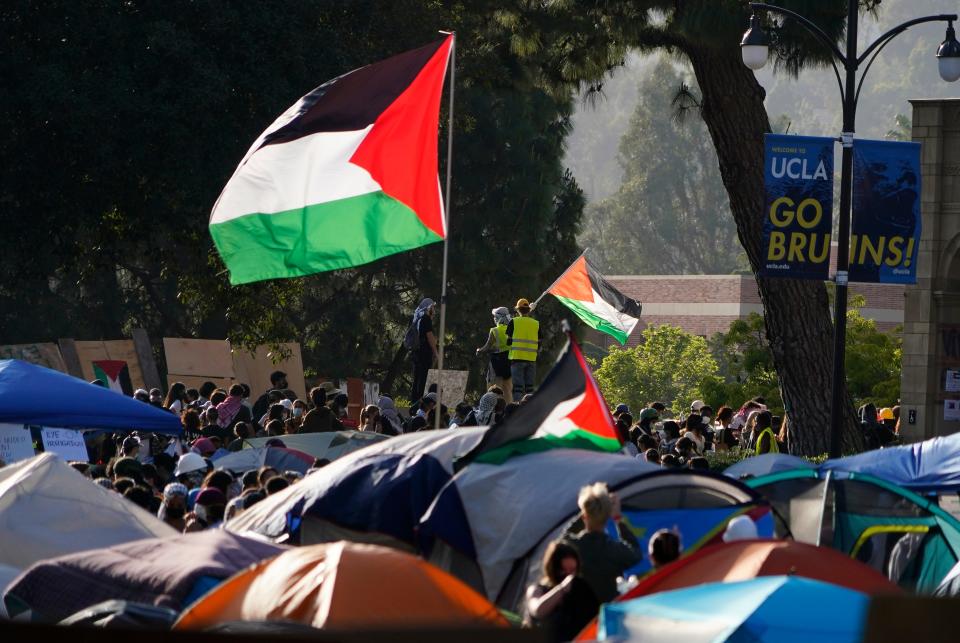
A pivotal moment for the UCLA protest came after midnight Tuesday into Wednesday morning, when a large group of counter-protestors gathered on the lawn east of the camp. Some wore sweatshirts with pro-Israel messages, waved Israeli flags and flags tied to Jewish organizations, and chanted pro-Israel slogans.
For hours, counter-protesters attacked the camp, running in and pulling back sections of the makeshift fence, spraying chemical agents through holes in the barricade and launching fireworks into the camp.
The counter-protesters began attacking pro-Palestine protesters who ventured outside the camp, beating some with weapons and spraying them with pepper spray. Police had no obvious response or presence at the time.
“I have scratches all over my body from being hit with sticks when I was dragged out into a group of counter-protestors,” 21-year-old student Aidan Doyle told USA TODAY. “They hit me on the back with sticks, slashed my elbow with a metal rod, maced me and then threw a hammer at my leg.”
As the violence unfolded, UCLA released a statement at 12:12 a.m. Wednesday morning stating the university had “immediately called law enforcement for mutual aid support.” Yet police officers arrived almost three hours later. Even after officers arrived, protesters told USA TODAY, the assaults continued in a different part of the camp. No arrests of counter-protesters have been announced.
Later in the morning of May. 1, UCLA Chancellor Gene Block released a statement condemning the violence: “Late last night, a group of instigators came to Royce Quad to forcefully attack the encampment that has been established there to advocate for Palestinian rights,” the statement reads. “However one feels about the encampment, this attack on our students, faculty and community members was utterly unacceptable.” Block pledged to investigate the incident.
May 1-2: Police dismantle the protest
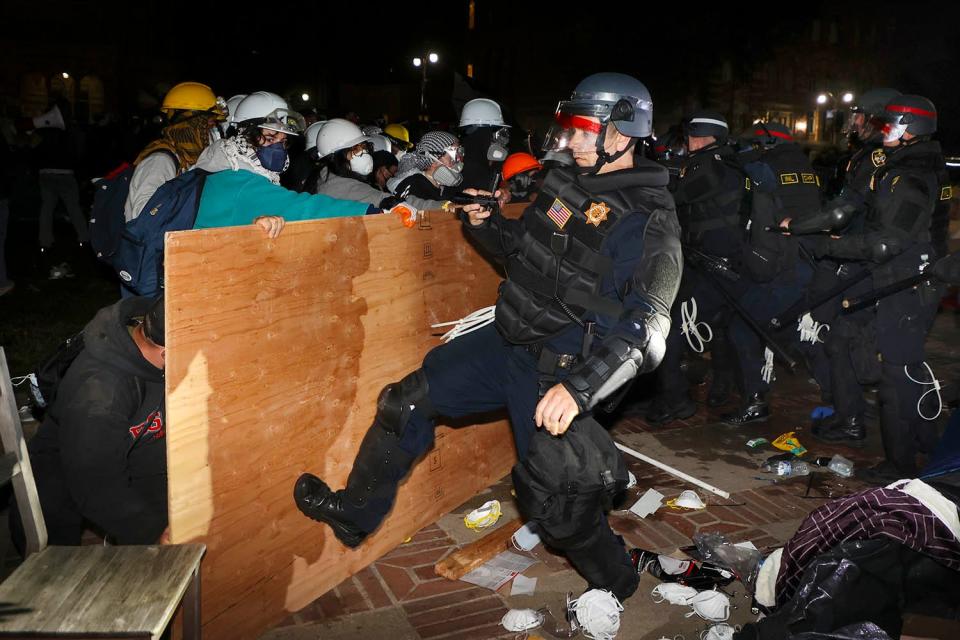
Late Wednesday afternoon, dozens of police officers began amassing around the pro-Palestinian protest, most of them wearing riot gear.
Inside the camp, protesters began preparing for conflict. Personal protective equipment including hundreds of helmets, masks and eye goggles poured into the camp from donors, including students, as well as a continuous stream of scrap wood and construction materials to reinforce the barricades.
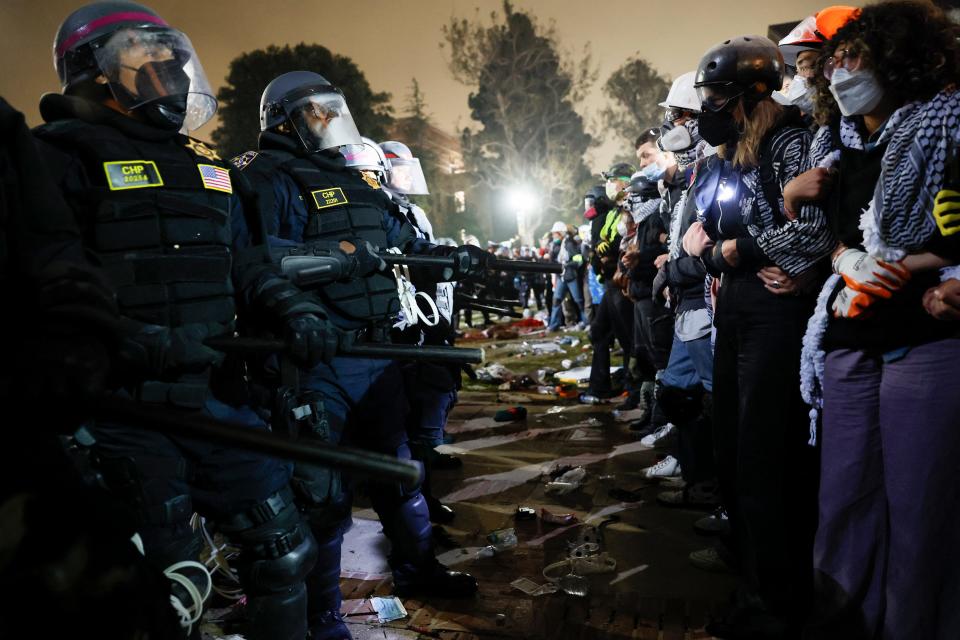
About 1:20 a.m. Thursday, a group of riot police entered the western edge of the camp and were faced with a wall of hundreds of protesters. The protesters chanted “Peaceful protest” and “Get out” as they walked towards the officers, pushing them back out of the camp.
Police at the main entrance later attempted to enter the camp, but were blocked by protesters using shields and umbrellas. Protesters surrounded the police, chanting “Leave our campus!”
Shortly after 4 a.m. on Thursday, the police made their final push into the camp: Officers dismantled the barricade at the eastern edge of the protest, sometimes engaging in tussles with protesters. At least one man was seriously injured.
Officers moved steadily deeper into the camp as dozens of flash-bang explosives exploded overhead and police fired foam projectiles into the camp. Many protestors left.
At least 200 people were arrested as the camp was shut down, according to the university.
May 2: Chancellor says camp was a ‘focal point for serious violence’
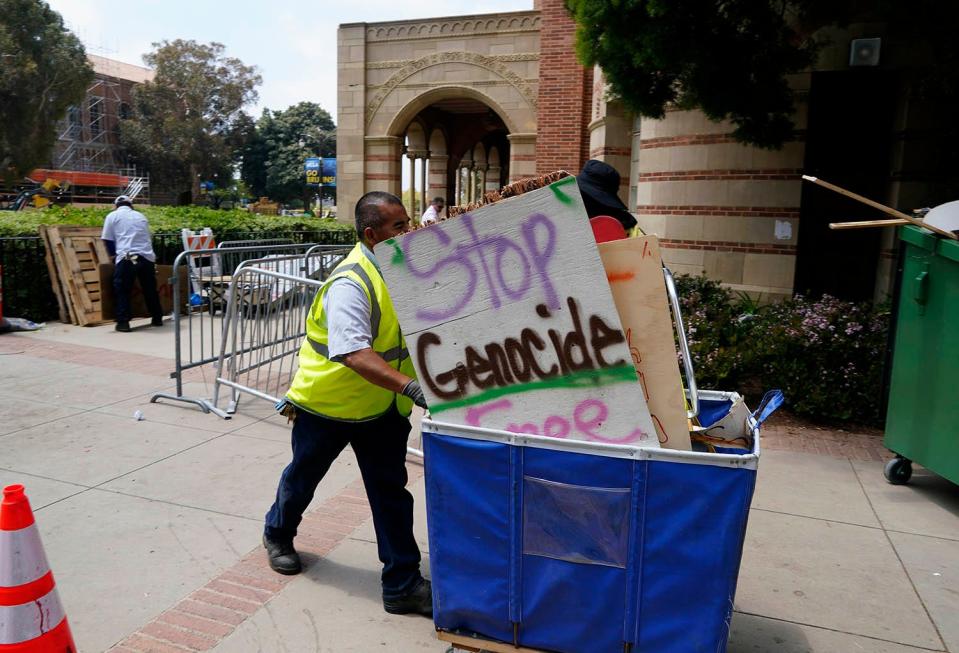
In a statement released Thursday morning, Block explained the university’s rationale for shutting down the protest.
“Several days of violent clashes between demonstrators and counter-demonstrators put too many Bruins in harm’s way and created an environment that was completely unsafe for learning,” the statement reads.
The assault by counter-protestors on Tuesday night, which Block calls a “terrifying attack,” was one of the contributing factors in sending in the police.
Block also cited disruption to campus, noting that classes were canceled on Wednesday.
No classes take place in Dickson Plaza.
Will Carless is a national correspondent covering extremism and emerging issues. Contact him at [email protected]. Follow him on X @willcarless.
This article originally appeared on USA TODAY: Inside UCLA protest: How counter-attack, then police, shut it down
